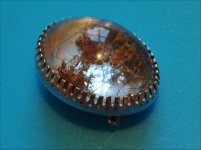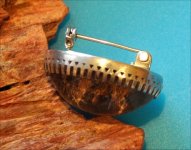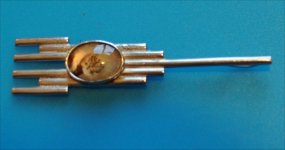- Feb 3, 2009
- 38,855
- 146,021
- 🥇 Banner finds
- 1
- Detector(s) used
- Deus, Deus 2, Minelab 3030, E-Trac,
- Primary Interest:
- Relic Hunting
Trying to get the date and the maker of this watch chain, hoping somebody can provide some insight please.
I think it's from Birmingham
Not sure if that A is from 1888 or 1900 for the date code
.


Can't match the maker up from the records either. J.W.B.Ld

Watch chain 44 grams, 22 inches long.

I think it's from Birmingham
Not sure if that A is from 1888 or 1900 for the date code
.
Can't match the maker up from the records either. J.W.B.Ld
Birmingham Hallmarks 4 - Encyclopedia of Silver Marks, Hallmarks & Makers' Marks
Birmingham Hallmarks, Makers' Marks & Date Letters on Antique Sterling - Online Encyclopedia of Silver Marks, Hallmarks & Makers' Marks
www.925-1000.com
Watch chain 44 grams, 22 inches long.













